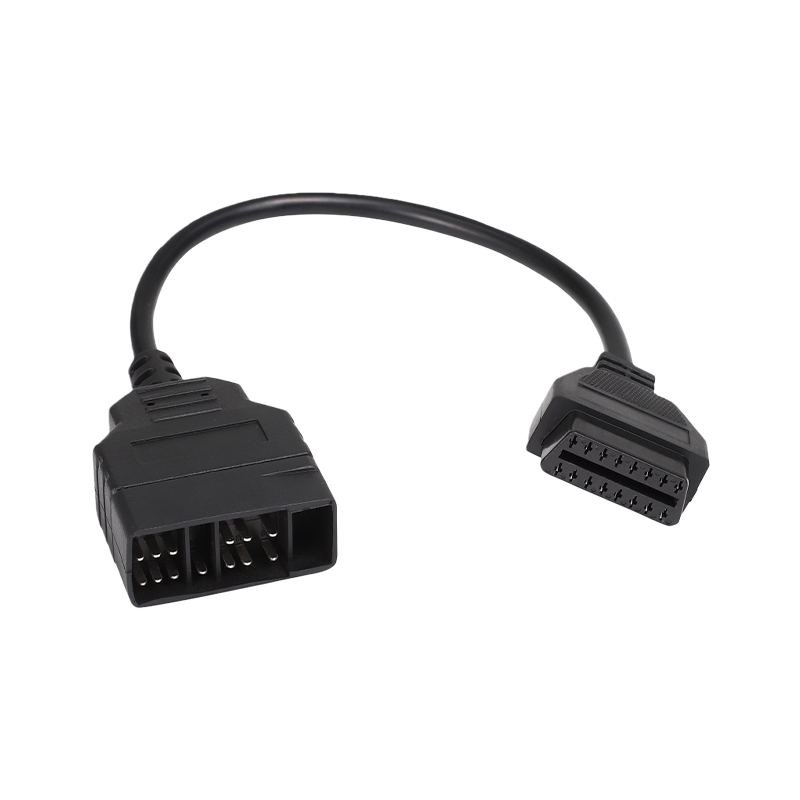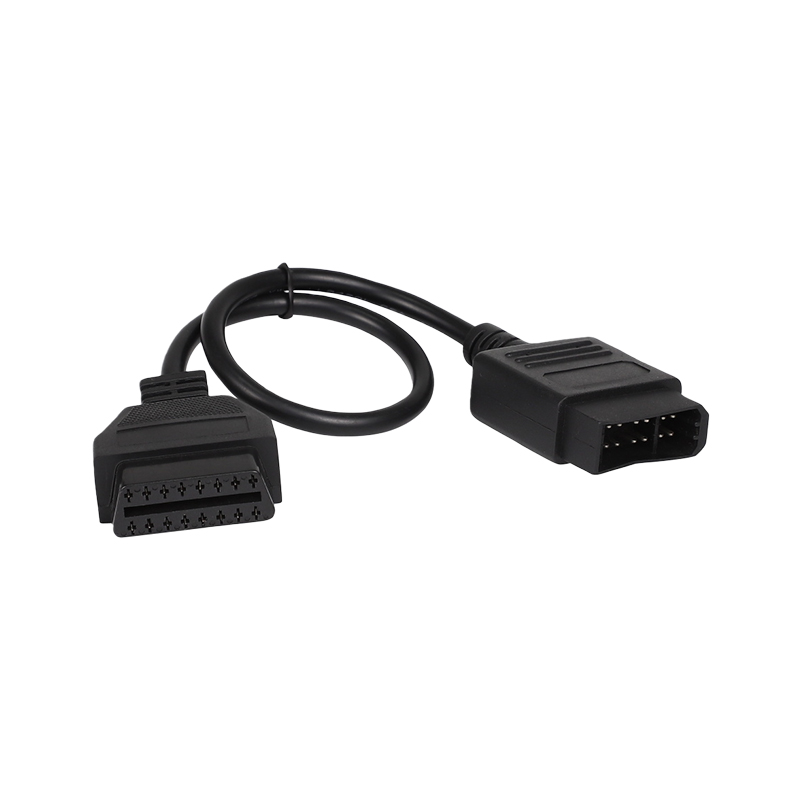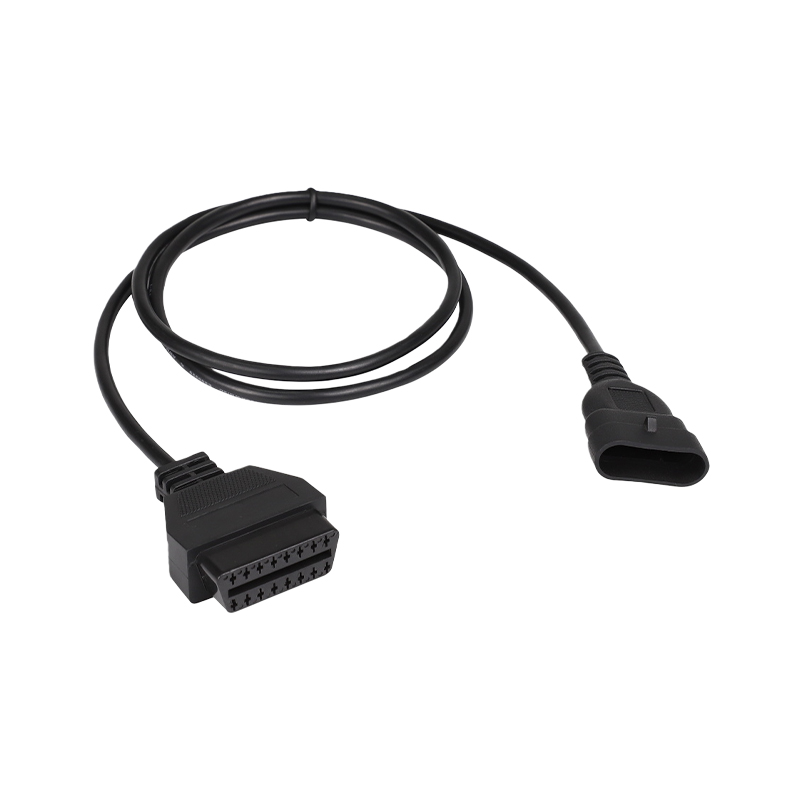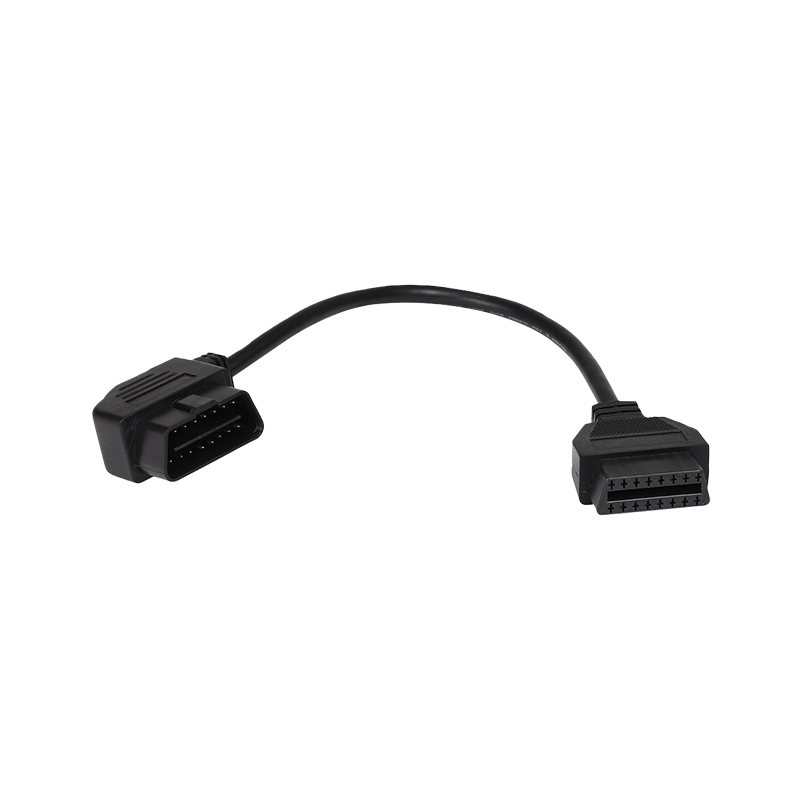How do male/female connectors for CAN bus cables for communication balance high-voltage isolation and signal transmission security?
Release Time : 2025-09-29
The male/female connector can bus cable for communication system is not only the "nervous system" for information exchange between devices but also carries critical safety control and real-time monitoring functions. In these scenarios, the communication cable must not only ensure high-speed and stable data transmission but also face the severe challenges posed by high-voltage electrical environments. Achieving both high-voltage isolation and signal transmission security in complex operating conditions where high-voltage and low-voltage systems coexist has become a crucial criterion for measuring CAN communication reliability.
1. Physical Isolation: Structural Design Blocks High-Voltage Ingress Paths
As the interface end of a CAN communication cable, one of its core tasks is to establish an electrical isolation barrier, preventing high-voltage power from the powertrain through signal lines to the low-voltage communication network. Modern, high-performance male/female connectors for CAN bus cables achieve this through multiple physical isolation designs. First, an internal insulation barrier structure within the connector strictly separates the high-voltage terminals from the CAN signal terminals, ensuring sufficient creepage and clearance distances between them. For example, in electric vehicle battery management systems, CAN bus cables are typically designed with a multi-cavity structure, with signal and high-voltage channels independently sealed to prevent arcing or breakdown risks. Furthermore, high-dielectric-strength engineering plastics are used for the housing and terminal blocks. Insulation walls are installed between the internal terminals to further enhance dielectric strength and ensure reliable insulation performance even in humid, oily, or high-temperature environments.
2. Shielding Protection: Building an Electromagnetically Safe "Signal Tunnel"
During high-voltage system operation, high-current starting and stopping, motor reversing, and other operations generate strong electromagnetic interference, which can easily couple into CAN communication lines, causing signal distortion, bit errors, and even communication interruption. Therefore, CAN bus cables must possess excellent electromagnetic shielding capabilities. CAN bus cables typically feature a full-metal housing and a 360° ring crimp connection to the cable's braided shield. When the connector is mated, the metal shell tightly contacts the male connector on the opposite end, forming a continuous Faraday cage structure that completely encloses the CAN differential signal within the shielded cavity, effectively suppressing the intrusion of external interference and the radiation of internal signals. Furthermore, the CAN_H and CAN_L signal lines utilize a twisted-pair, shielded structure within the connector to maintain differential signal symmetry and enhance common-mode rejection. Some products also integrate filtering components to further purify the signal at the interface, improving communication noise immunity and stability.
3. Connection Reliability: Anti-Mating and Locking Mechanisms Ensure Physical Security
In high-voltage applications, incorrect connection can have catastrophic consequences. Therefore, male/female connectors for CAN bus cables for communication generally feature a fool-proof design. Through unique keyways, eccentric bosses, or color coding, these connectors ensure that they can only be connected to the matching male connector, eliminating the risk of mis-mating the high-voltage and signal ends. Furthermore, to withstand dynamic environments such as vehicle vibration and industrial equipment operation, male/female connectors for CAN bus cables for communication feature reliable mechanical locking mechanisms, such as M12 thread locking, push-pull bayonet locks, or direct-insert self-locking mechanisms. These designs not only prevent loosening and disconnection but also automatically complete the electrical connection of the shield during mating, ensuring grounding continuity and further enhancing system safety.
4. Materials and Processing: Durability Supports Long-Term Safe Operation
Can bus cables for communication operate in harsh environments such as high temperature, high humidity, and oily conditions. Their material selection and manufacturing process directly impact their safe lifespan. The contacts typically utilize a copper alloy base plate with a gold plating treatment, ensuring low contact resistance and high corrosion resistance. The housing, with an IP67/IP68 rating, withstands water splashes, dust, and even brief immersion. The cable outlet utilizes a molded-in process for integrated strain relief and sealing, preventing internal breakage or moisture intrusion caused by cable pull.
In male/female connector can bus cable for communication, the can bus cable for communication is more than just a simple "plug," but an intelligent, secure interface that integrates electrical isolation, electromagnetic shielding, mechanical locking, and environmental protection. It creates a solid "firewall" between high voltage and signals, ensuring unimpeded data flow while safeguarding the operational safety of the entire system. Today, as electrification and intelligence are rapidly converging, this design that "balances high-voltage isolation and signal safety" is a key step in modern connection technology moving towards higher reliability.
1. Physical Isolation: Structural Design Blocks High-Voltage Ingress Paths
As the interface end of a CAN communication cable, one of its core tasks is to establish an electrical isolation barrier, preventing high-voltage power from the powertrain through signal lines to the low-voltage communication network. Modern, high-performance male/female connectors for CAN bus cables achieve this through multiple physical isolation designs. First, an internal insulation barrier structure within the connector strictly separates the high-voltage terminals from the CAN signal terminals, ensuring sufficient creepage and clearance distances between them. For example, in electric vehicle battery management systems, CAN bus cables are typically designed with a multi-cavity structure, with signal and high-voltage channels independently sealed to prevent arcing or breakdown risks. Furthermore, high-dielectric-strength engineering plastics are used for the housing and terminal blocks. Insulation walls are installed between the internal terminals to further enhance dielectric strength and ensure reliable insulation performance even in humid, oily, or high-temperature environments.
2. Shielding Protection: Building an Electromagnetically Safe "Signal Tunnel"
During high-voltage system operation, high-current starting and stopping, motor reversing, and other operations generate strong electromagnetic interference, which can easily couple into CAN communication lines, causing signal distortion, bit errors, and even communication interruption. Therefore, CAN bus cables must possess excellent electromagnetic shielding capabilities. CAN bus cables typically feature a full-metal housing and a 360° ring crimp connection to the cable's braided shield. When the connector is mated, the metal shell tightly contacts the male connector on the opposite end, forming a continuous Faraday cage structure that completely encloses the CAN differential signal within the shielded cavity, effectively suppressing the intrusion of external interference and the radiation of internal signals. Furthermore, the CAN_H and CAN_L signal lines utilize a twisted-pair, shielded structure within the connector to maintain differential signal symmetry and enhance common-mode rejection. Some products also integrate filtering components to further purify the signal at the interface, improving communication noise immunity and stability.
3. Connection Reliability: Anti-Mating and Locking Mechanisms Ensure Physical Security
In high-voltage applications, incorrect connection can have catastrophic consequences. Therefore, male/female connectors for CAN bus cables for communication generally feature a fool-proof design. Through unique keyways, eccentric bosses, or color coding, these connectors ensure that they can only be connected to the matching male connector, eliminating the risk of mis-mating the high-voltage and signal ends. Furthermore, to withstand dynamic environments such as vehicle vibration and industrial equipment operation, male/female connectors for CAN bus cables for communication feature reliable mechanical locking mechanisms, such as M12 thread locking, push-pull bayonet locks, or direct-insert self-locking mechanisms. These designs not only prevent loosening and disconnection but also automatically complete the electrical connection of the shield during mating, ensuring grounding continuity and further enhancing system safety.
4. Materials and Processing: Durability Supports Long-Term Safe Operation
Can bus cables for communication operate in harsh environments such as high temperature, high humidity, and oily conditions. Their material selection and manufacturing process directly impact their safe lifespan. The contacts typically utilize a copper alloy base plate with a gold plating treatment, ensuring low contact resistance and high corrosion resistance. The housing, with an IP67/IP68 rating, withstands water splashes, dust, and even brief immersion. The cable outlet utilizes a molded-in process for integrated strain relief and sealing, preventing internal breakage or moisture intrusion caused by cable pull.
In male/female connector can bus cable for communication, the can bus cable for communication is more than just a simple "plug," but an intelligent, secure interface that integrates electrical isolation, electromagnetic shielding, mechanical locking, and environmental protection. It creates a solid "firewall" between high voltage and signals, ensuring unimpeded data flow while safeguarding the operational safety of the entire system. Today, as electrification and intelligence are rapidly converging, this design that "balances high-voltage isolation and signal safety" is a key step in modern connection technology moving towards higher reliability.







